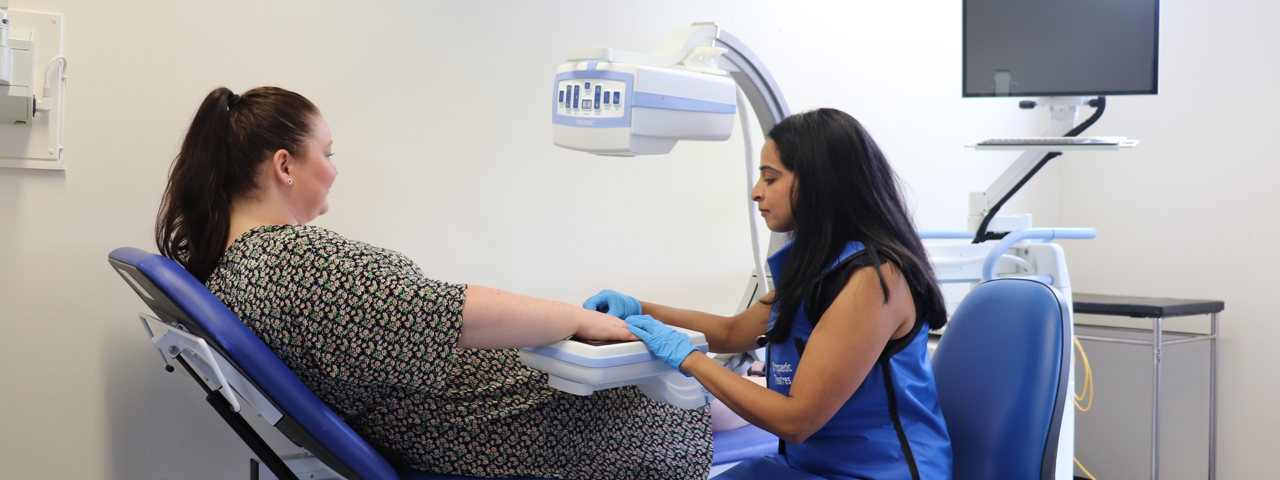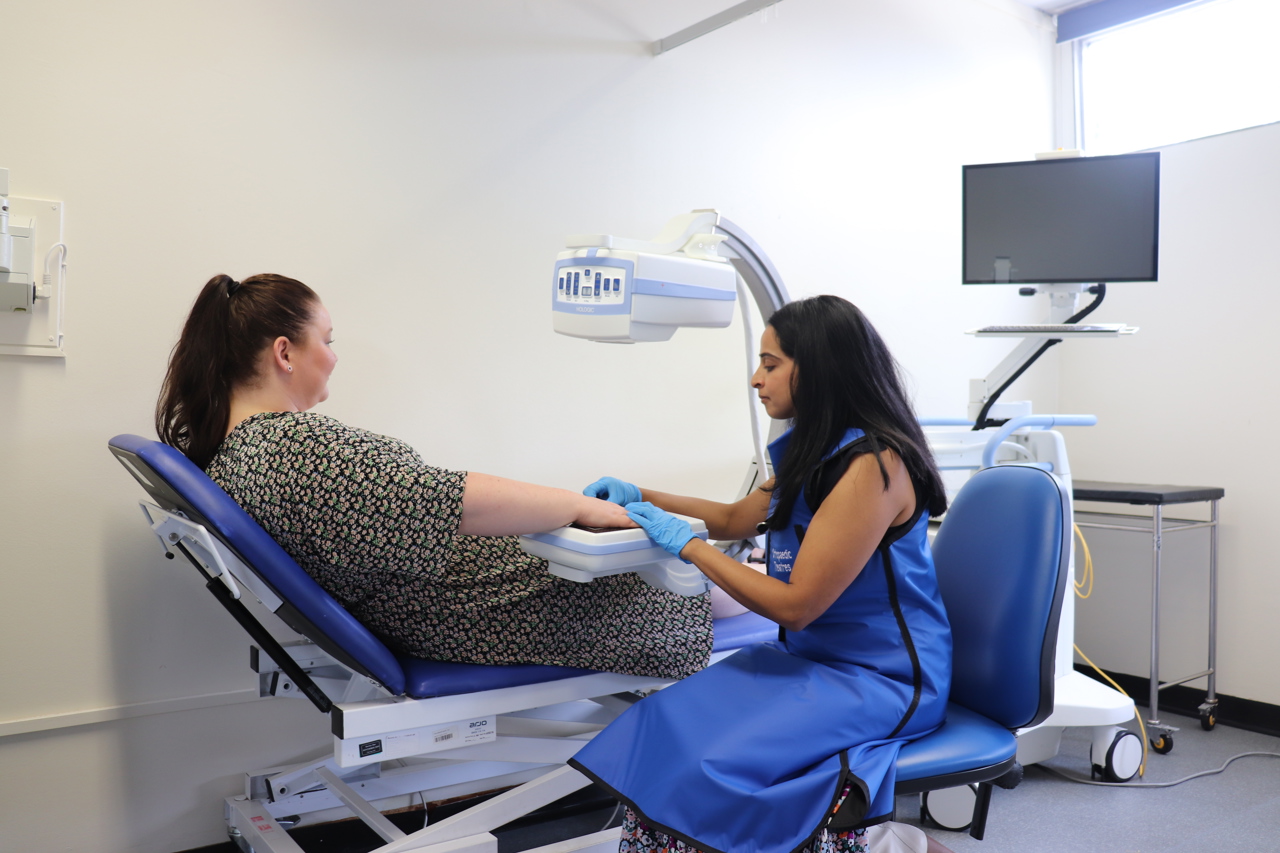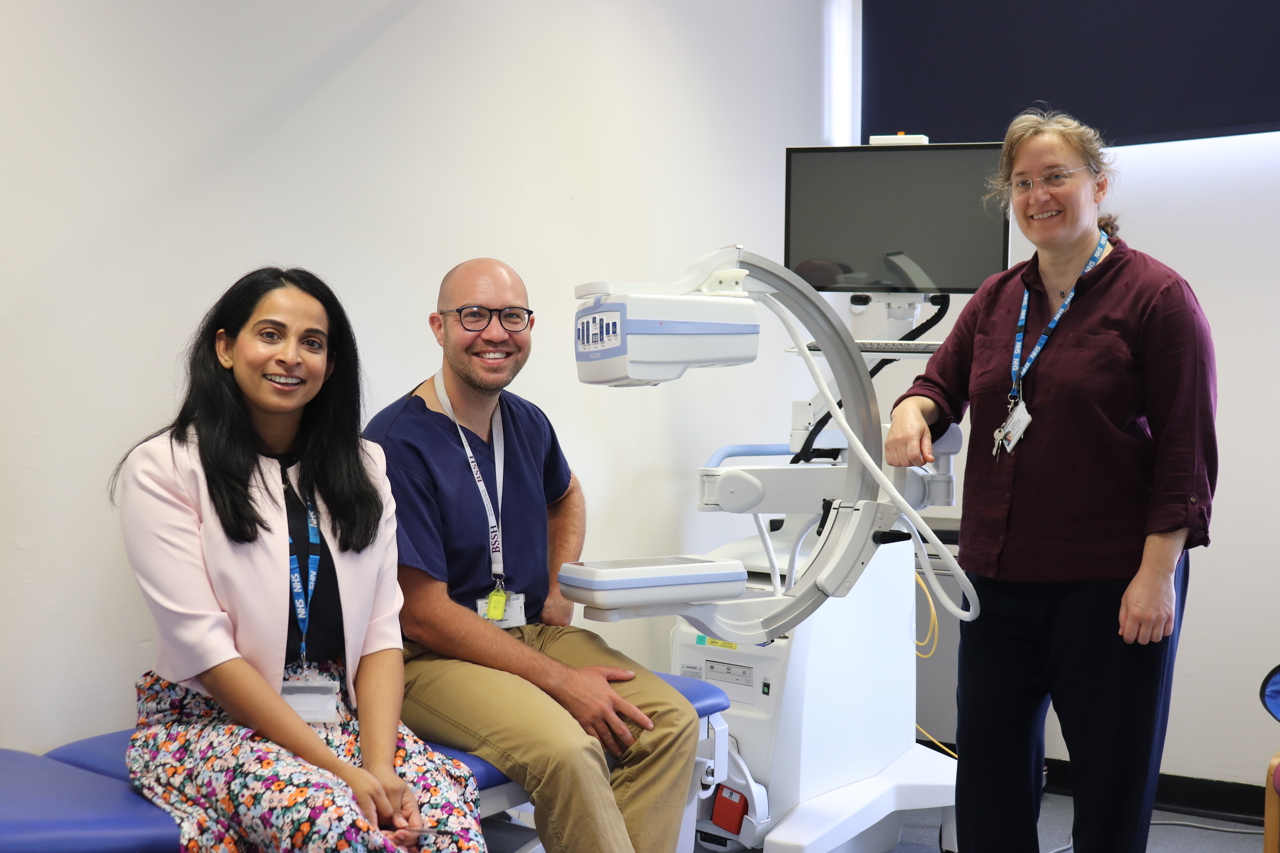
‘One-stop’ clinic opens its doors at the Royal Berkshire Hospital, bringing relief to arthritis sufferers
The Trauma and Orthopaedics team at the Royal Berkshire NHS Foundation Trust have launched a ‘one-stop’ clinic to help patients suffering with the pain of osteoarthritis in their hands and wrists. The clinic streamlines the experience for patients, reducing the wait for treatment by months, while also easing the pressure on the hospital’s other departments.
Based in the South Block of the Royal Berkshire Hospital, the team see hundreds of people in the Outpatients department each month. A quarter of all GP referrals to the team are for patients with arthritis, which is often part of the wear and tear of getting older and can be difficult to live with. Thanks to a brand new x-ray machine - a mini c-arm - clinicians can now image the hand and wrist themselves in the clinic.
This means a patient can get seen, assessed, diagnosed, and treated with a steroid injection in a single first visit to the hospital. And they can also see the images pop up on the screen in real-time, helping them to understand their condition and the treatment they are having.
Natasha Picardo, Trauma and Orthopaedic Consultant said, “We hope this clinic makes a big difference to patients who have arthritis in the hands and wrists. Living with pain is exhausting, and makes normal life difficult. To be able to see patients just once, often within weeks of an initial referral, means they can receive treatment and get on with their lives much more quickly.


“Before this clinic, it could take a year from GP referral, to first appointment, to x-ray, and then on to treatment in our radiology department or in an operating theatre. It was important to us to come up with a way to streamline things. It means our patients get the treatment they need more quickly, and also takes pressure off of our colleagues in other departments, freeing them up to deal with other patients.”
The mini c-arm x-ray machine imaging also allows the team to treat patients with broken bones – manipulating them back into position and applying splints under live x-ray screening – in many cases, preventing operations, and the recovery time involved in that.
This builds on the one-stop Dupuytren clinic which opened at the hospital earlier in the summer. The clinic deals with 360 referrals for Dupuytren’s disease a year which causes thickening of the tissues in the palm of the hand and contractures of the fingers
Treatment involves releasing diseased cords in the palm of the hand under local anaesthetic using a needle (needle fasciotomy ) This procedure was traditionally done in theatre.
The team in the outpatients clinic now see and assess patients referred from their GP, and can offer needle fasciotomy in clinic at the same sitting. This means patients get treatment more quickly, there are fewer trips to the hospital, and it has also freed up theatre space for patients who need more complex treatment.
